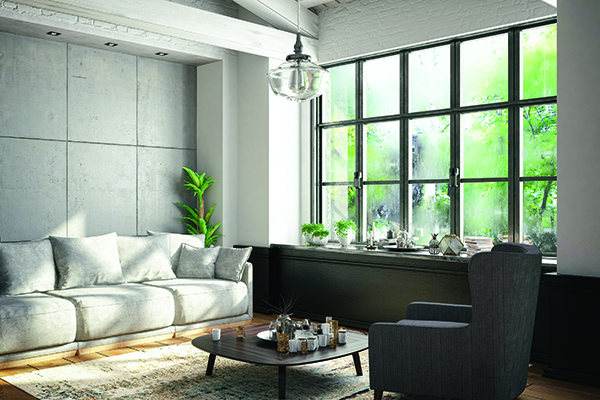Homeowners in search of extra room often wonder whether it’s worth converting their garage into living space. The dollars and cents of these projects can make sense—converting a two-car garage typically costs $10,000 to $25,000, considerably less than the $40,000 to $60,000 likely required to have a 400-to-500-square-foot addition built from scratch, and is potentially easier and provides better space than finishing a basement.
But converting a garage does require some important considerations. Here are the things you need to know if you’re considering a garage conversion…
This project’s return on investment varies greatly by neighborhood. Converting your garage into living space might not significantly boost the resale value of your home—it even could lead to a lower price when you sell. It comes down to how much buyers in your area value the extra living space versus enclosed parking. As a rule of thumb, if most homes in the area have enclosed garages, many buyers are likely to consider your home’s lack of a garage a major turnoff and not even give it a look. Ask real estate agents who sell many homes in your neighborhood.
Kitchens and bathrooms often create problems in conversions. Garages can be converted into bedrooms, media rooms, home offices, man caves/she sheds and more. But two major issues often arise when homeowners try to create kitchens and/or bathrooms—a problem for anyone hoping to turn a garage into an in-law apartment. First, if your home is in an area zoned exclusively for single-family housing, zoning laws may limit the home to one kitchen—though adding a more modest “kitchenette” often is not prohibited (see below). Second, the cost of adding the needed plumbing can easily double the cost of a garage conversion—workers might have to jackhammer through the cement slab and lay long underground lines to connect drains to sewer lines or septic systems.
Helpful: If your goal is to convert a garage into an in-law apartment and you’re willing to pay the plumbing costs, consider this—zoning rules typically allow fridges, microwaves and sinks in rooms other than the home’s primary kitchen. The prohibition usually is against having more than one room containing a stove and/or oven. If the individual living in your in-law apartment doesn’t cook often, this might not be a major concern and a modest “kitchenette” that falls within the rules will suffice. Read your city or county’s kitchen-related zoning rules carefully—there could be additional rules, such as restrictions on the size of a fridge and sink in a room other than the kitchen…or a ban on a built-in microwave in a room other than the kitchen.
Your existing HVAC system likely will need an upgrade. Adding 400 to 500 square feet of interior space often overtaxes most heating and air-conditioning systems. The total cost of upgrading your system might cost $3,500 to $7,500 plus probably at least another $400 to $600 to extend the ductwork into the garage.
Alternative: Rather than extend an existing HVAC system into the garage, install a “mini split” system. These affordable, electric-powered ductless wall-mounted units can heat and cool smaller spaces efficiently. Expect to pay around $2,500 installed.
Your garage slab likely needs to be leveled. The concrete slab in most garages is sloped so that water that comes in with vehicles flows back out under the garage door. Don’t try to save money by laying flooring directly on top of this slightly slanted slab if you convert the garage—the uneven floor will be more noticeable than you expect and detract dramatically from potential buyers’ opinion of the space when you sell.
For $1,000 to $1,500, you can have a “cap slab” laid over the existing slab to create a level surface. This should be at least three inches thick at its thinnest area to avoid future cracking. Having a wood platform constructed to even out the sloped slab is a less-than-ideal solution—the narrow gap under this new wood floor could become a home for rodents.
Garage windows probably will have to be upgraded. Most garages have low-quality windows—this space wasn’t originally heated or cooled, so there was no reason to install modern, energy-efficient windows. Upgrading windows typically costs $500 to $1,000 apiece—but with garage conversions. they could cost several times as much. That’s because garage windows often are small in size. Replacing a small window with a larger one can cost a few thousand dollars or more per window because of the added labor required. It’s usually wise to increase the number of windows, too. Helpful: Consider adding large bay windows or picture windows in the new walls constructed to fill the gap where the garage doors previously stood.
Your conversion won’t necessarily be cheaper or easier if there’s already drywall in place. Homeowners tend to assume that converting a garage is relatively simple if drywall already has been hung—after all, the space looks nearly finished already. But drywall tends to create as many costs and challenges as it solves. There’s probably no insulation behind garage drywall because the space wasn’t meant to be heated or cooled. You can have foam insulation sprayed behind existing drywall, but that will roughly triple insulation costs to perhaps $1,500, up from around $500 to put in fiberglass insulation prior to drywall. Existing drywall also is likely to boost electrician’s bills. Most garages do not have enough electrical outlets, for example—code often requires outlets every six to eight linear feet in finished rooms. Adding outlets will take an electrician extra time—and cost you extra money—if the drywall is already hung.


